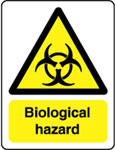Team:Mexico-UNAM-CINVESTAV/Safety
From 2010.igem.org
| (6 intermediate revisions not shown) | |||
| Line 13: | Line 13: | ||
* public safety, or | * public safety, or | ||
| - | * | + | * environmental safety |
| - | |||
| - | + | '''No, our project involves only standar laboratory procedures. Biosecurity level 1.''' | |
| - | + | 2. Do any of the new BioBrick parts (or devices) that you made this year raise any safety issues? | |
| + | |||
| + | '''NO''' | ||
| - | |||
| Line 29: | Line 29: | ||
* If yes, what does your local biosafety group think about your project? | * If yes, what does your local biosafety group think about your project? | ||
| - | * | + | * If no, which specific biosafety rules or guidelines do you have to consider in your country? |
| + | '''NO, the regulation is external to our university, the institution is named [http://www.cibiogem.gob.mx/Acerca/Paginas/default.aspx CIBIOGEM]'''. | ||
| - | Do you have any other ideas how to deal with safety issues that could be useful for future iGEM competitions? How | + | |
| + | |||
| + | 4. Do you have any other ideas how to deal with safety issues that could be useful for future iGEM competitions? How | ||
could parts, devices and systems be made even safer through biosafety engineering? | could parts, devices and systems be made even safer through biosafety engineering? | ||
| + | |||
| + | '''In our opinion, all the experiments or devices made by iGEM teams should be narrowed to the laboratory environment. Before any use of iGEM parts in nature, is necessary an open discussion and strict analysis.''' | ||
| + | |||
| + | |||
| + | {{Mexico-UNAM-CINVESTAV-FOOTER}} | ||
Latest revision as of 21:45, 27 October 2010
Key questions
For iGEM 2010 teams are asked to detail how they approached any issues of biological safety associated with their projects. Specifically, teams should consider the following questions:
1. Would any of your project ideas raise safety issues in terms of:
- researcher safety
- public safety, or
- environmental safety
No, our project involves only standar laboratory procedures. Biosecurity level 1.
2. Do any of the new BioBrick parts (or devices) that you made this year raise any safety issues?
NO
3. Is there a local biosafety group, committee, or review board at your institution?
- If yes, what does your local biosafety group think about your project?
- If no, which specific biosafety rules or guidelines do you have to consider in your country?
NO, the regulation is external to our university, the institution is named [http://www.cibiogem.gob.mx/Acerca/Paginas/default.aspx CIBIOGEM].
4. Do you have any other ideas how to deal with safety issues that could be useful for future iGEM competitions? How could parts, devices and systems be made even safer through biosafety engineering?
In our opinion, all the experiments or devices made by iGEM teams should be narrowed to the laboratory environment. Before any use of iGEM parts in nature, is necessary an open discussion and strict analysis.
 |
 |
 |
 |
 "
"





